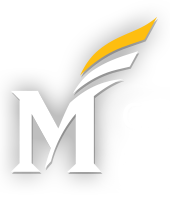Here is a list of plants that are currently in the Food Forest. There are some signs present for a few of the plants, but otherwise you will need to identify the plants for yourself, like a scavenger hunt! The uses of each plant are also listed, so please help yourself once you’ve safely identified the edible parts of the plant.
Asimina triloba (Pawpaw, Indian banana)
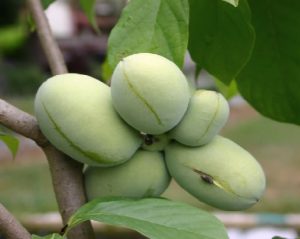
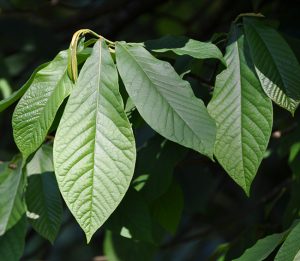
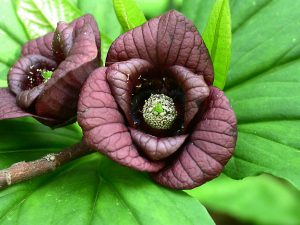
Common Names: Pawpaw, Indian banana
Botanical Name: Asimina triloba – Allegheny and Potomac cultivars
Location: Along the nw wall of Innovation Hall
Primary Function: Food Crop – fruit bearing
A native deciduous tree that can grow 20 to 30 feet tall. It typically appears in clusters in alluvial, or other moist nutrient-rich forests. When it is an under-story, it needs full sun to ensure fruiting. The tree needs several years to bear fruit. This cultivar is noted for its large fruit that can weigh in at 8 oz. with sweet, early-ripening, creamy yellow flesh, tasting similar to bubble-gum. The leaves are alternate, produce a pungent odor when crushed, and display a bright yellow fall color. The bark is smooth with wart-like lenticels. In spring, 6-petaled, purplish-brown flowers mature that face downward and are pollinated by flies. During the late summer to early fall, the fruit ripen even at a green color and should be slightly soft. The fruit resembles a short, fat banana in size and taste and is the largest fruit native to North America. However, to obtain cross pollination, you need more than one genetic strain.
Vaccinium corymbosum (Highbush Blueberry)

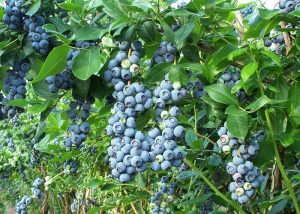
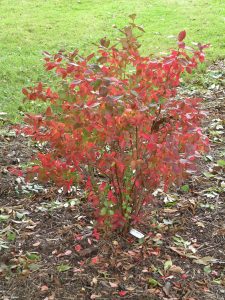
Common Name: Highbush Blueberry
Botanical Name: Vaccinium corymbosum
Many cultivars and hybrids including Elliot, Patriot, Jersey, Pink Icing, Peach Sorbet
Location: Found throughout IFF
Primary Function: Food Crop – fruit bearing
Normally 5-8′ tall and although deciduous, blueberries are often the last thing to lose their foliage in winter. Small pointed blue-green and emerald leaves change to bright shades of red and orange. They are the most commercially grown type, but also make for four seasons of colors as a landscape plant. Small white, bell-shaped flowers in Spring give way to large, blue, mildly-sweet berries. Usually ripe in May and June.
Allium schoenoprasum (Chives)
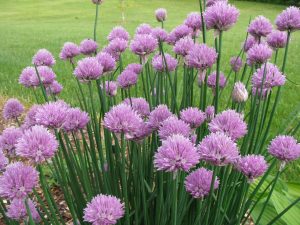
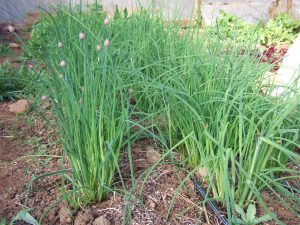
Common Name: Chives
Botanical Name: Allium schoenoprasum
Location: Near the Bench and and the gravel crossroads.
Primary Function: Food Crop – produces flowers, leaves, and roots
Chives have natural insect repelling properties. The plant is a great compliment to any garden for pest control and for fresh herbs.
Asparagus officinalis (Asparagus)
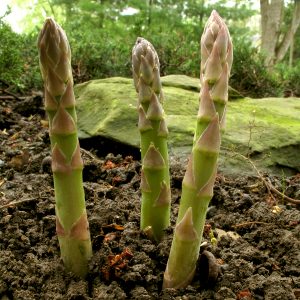

Common Name: Asparagus
Botanical Name: Asparagus officinalis
Primary Function: Food Crop
Fun Fact: Asparagus is commonly thought to be an aphrodisiac but is actually a strong diuretic.
Camellia sinensis (Tea Camellia)


Common Name: Tea Camellia
Botanical Name: Camellia sinensis
Location: Around the Fig tree in the southern corner of IFF
Primary Function: Food Crop – commonly used for tea
Camellia leaves have historically been used in Chinese and Indian teas. Studies have uncovered many health benefits of drinking tea including anti-cancer properties and weight loss effects.
Cercis canadensis (Eastern Redbud)
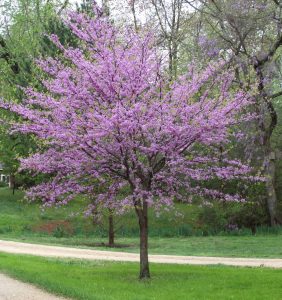
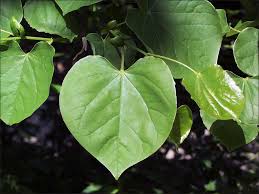
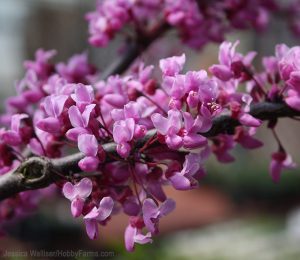
Common Name: Eastern Redbud
Botanical Name: Cercis canadensis
Location: Between Pawpaws along wall of Innovation Hall
Primary Function: Nitrogen Fixing and Wildlife Habitat
Native Americans consumed redbud flowers, raw or boiled, and ate roasted seeds. Flowers are edible raw. A deciduous, often multi-trunked understory tree with a rounded crown that typically matures to 20-30’ tall with a slightly larger spread. It has pea-like rose-purple flowers which bloom on bare branches in early spring (March-April) before the foliage emerges. This tree is native to eastern and central North America. It can be found in open woodlands, thickets, woodland margins, limestone glades and along rocky streams and bluffs. Flowers (to ½” wide) are bright magenta purple and edible, which bloom in clusters of 4-10 near the bark. Flowers are followed by flattened leguminous bean-like dry seedpods (to 2-4” long) that mature to brown in summer. Each pod has 6-12 seeds. Pods may remain on the tree into winter. Alternate, simple, cordate (heart-shaped), broadly ovate to nearly orbicular, dull green to blue-green leaves (3-5” across) have a papery texture and are short pointed at the tip. Leaves turn pale yellow to greenish-yellow in fall. This leguminous tree also fixes nitrogen and tolerates shade!
Corylus americana (American Hazelnut)

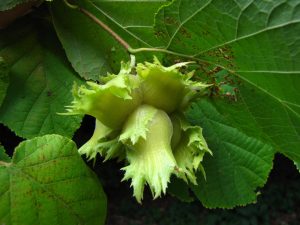
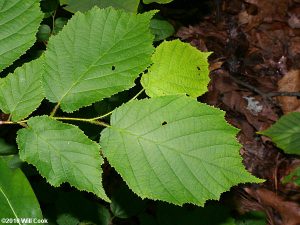

Common Name: American Hazelnut
Scientific Name ‘Cultivar’: Corylus americana
Primary Function: Food Crop
Fun Fact: The nuts from this tree provide food for many animals including deer, squirrels, turkeys, pheasants, and woodpeckers. The image on the far right shows the catkins that decorate the tree all winter and release pollen in the spring.
Diospyros virginiana (Persimmon)
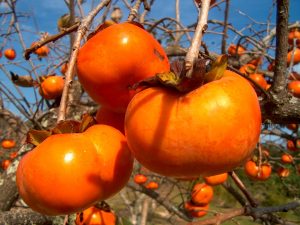

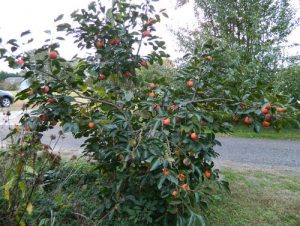
Common Name: Asian Persimmon
Scientific Name ‘Cultivar’: Diospyros virginiana
Primary Function: Food Crop – fruit bearing
Fun Fact: The seeds of the persimmon tree were used as make shift buttons during the Civil War.
Ficus carica (Fig)
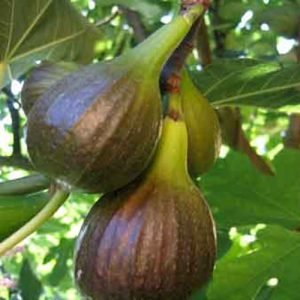
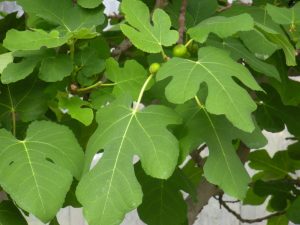
Common Name: Fig
Scientific Name ‘Cultivar’: Ficus carica
Primary Function: Food Crop – fruit bearing
Additional Function: Ornamental
Fun Fact: Our fig tree was generously donated by Mason employee Vittoria Perrone.
Fragaria x ananassa (Tristar Stawberry)
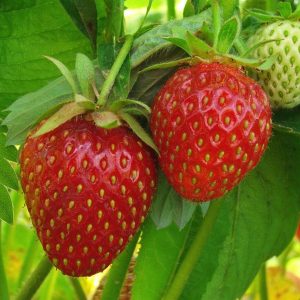

Common Name: Tristar Stawberry
Scientific Name ‘Cultivar’: Fragaria x ananassa
Primary Function: Food Crop – fruit bearing
Fun Fact: Although evidence is not conclusive, some evidence has shown that a diet inclusive of strawberries leads to reduced risk of cardiovascular disease and that the fruit’s extract has anticancer properties.
Gaylussacia baccata (Black Huckleberry)


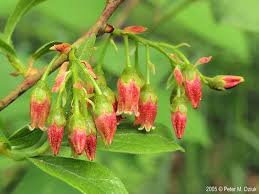
Common Name: Black Huckleberry
Scientific Name ‘Cultivar’: Gaylussacia baccata
Primary Function: Wildlife Habitat – fruit bearing
Prunus persica (Peach)
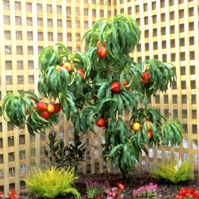
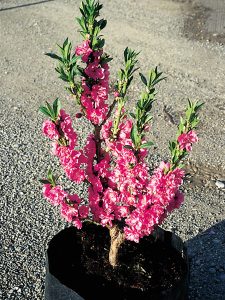
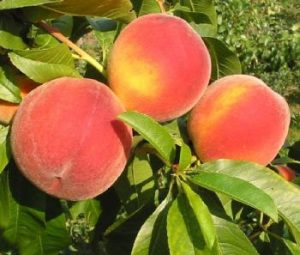
Common Name: Peach
Scientific Name ‘Cultivar’: Prunus persica
Primary Function: Food Crop – fruit bearing
Additional Function: Habitat – food for wildlife and perch for birds
Fun Fact: Peaches have a great deal of symbolism in Asian and European culture. The branches and fruit were long thought to protect against evil spirits.
Prunus salicina (Japanese Plum)
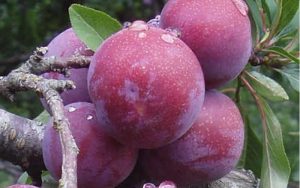
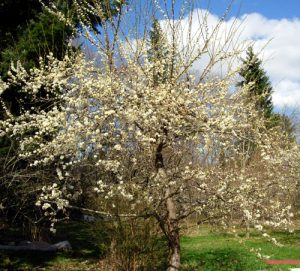

Common Name: Japanese Plum
Scientific Name ‘Cultivar’: Prunus salicina
Primary Function: Food Crop – fruit bearing
Additional Function: Wildlife Habitat – provides food and roosting for birds
Pyrus pyrifolia (Asian Pear)

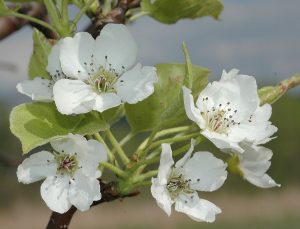
Common Name: Asian Pear
Scientific Name ‘Cultivar’: Pyrus pyrifolia
Primary Function: Food Crop – fruit bearing
Fun Fact: Virginia is one of five states in the US where Asian pears are grown!
Pyrus serotina (Chinese Pear)
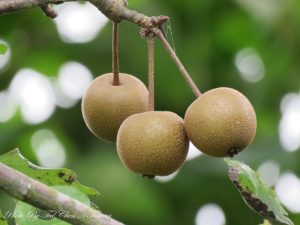
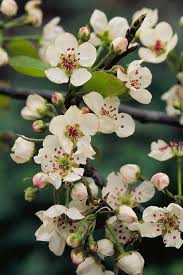
Common Name: Chinese/Asian Pear
Scientific Name ‘Cultivar’: Pyrus serotina
Primary Function: Food Crop – fruit bearing
Fun Fact: The pears from this plant are particularly crisp, juicy, and quite delicious.
Rheum rhabarbarum (Rhubarb)

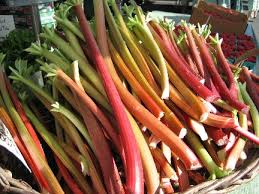
Common Name: Rhubarb
Scientific Name ‘Cultivar’: Rheum rhabarbarum
Primary Function: Food Crop – edible stems and stalks
Additional Function: Medicinal – used as a laxative and diet aid
Fun Fact: After sugar became affordable to commoners in 17th century England, the rhubarbs pies became highly popular.
Ribes odoratum (American Clove Currant)


Common Name: American Clove Currant
Scientific Name ‘Cultivar’: Ribes odoratum
Primary Function: Food Crop – produces edible flowers berries
Additional Function: Ornamental
Fun Fact: The Ribes odoratum is among the most drought resistant of the Ribes genus.
Rubus idaeus (Raspberry)

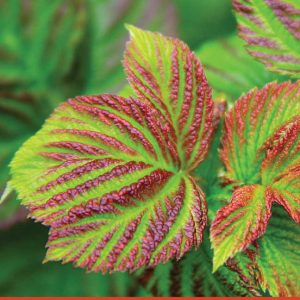
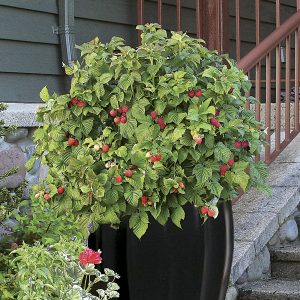
Common Name: Dwarf Raspberry
Scientific Name ‘Cultivar’: Rubus idaeus
Primary Function: Food Crop – fruit bearing
Additional Function: Medicinal – high in antioxidants
Fun Fact: The raspberry is not actually a berry. It is a cluster of drupelets (the fruit) surrounding a central core. Both the cluster and core are edible.
Sambucus nigra ssp. canadensis (American Black Elderberry)
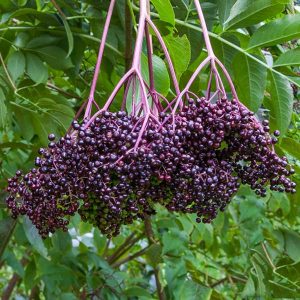
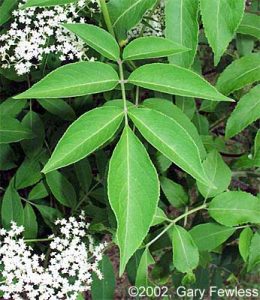
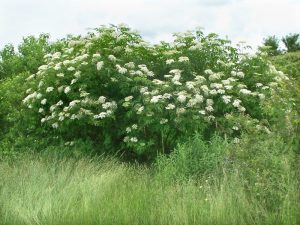
Common Name: American Black Elderberry
Scientific Name ‘Cultivar’: Sambucus nigra L. ssp. canadensis (L.) R. Bolli
Primary Function: Food Crop – bears leaves, berries, and flowers
Additional Function: Medicinal Plant
Fun Fact: In Romania, the flowers of this plant are used to make a popular soda. In the UK, the fermentation is done in a sealed container to make champagne.
Sassafras albidum (Sassafras)
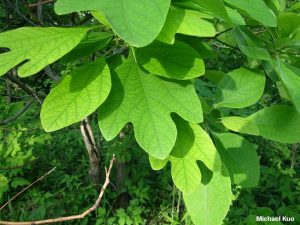
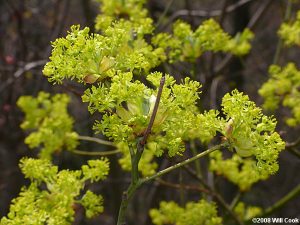
Common Name: Sassafras
Scientific Name ‘Cultivar’: Sassafras albidum
Primary Function: Food Crop
Additional Function: Sassafras is allopathic and can discourage the growth of certain other plants within its root zone.
Fun Fact: The roots and root bark supply oil of sassafras (used to perfume soap) and sassafras tea, and have been used to flavor root beer.
Symphytum x uplandicum 'Bocking 14' (Russian Comfrey)

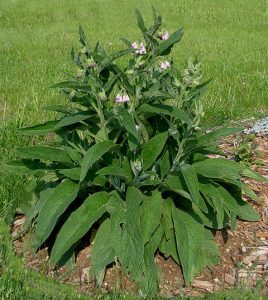

Common Name: Russian Comfrey
Scientific Name ‘Cultivar’: Symphytum x uplandicum ‘Bocking 14’
Primary Function: Nutrient Accumulator
Additional Function: Medicinal Plant
Fun Fact: Each plant harvested can yield 4-5 pounds of nutrient rich leaves that can be used as a great fertilizer.
Trifolium michelianum Savi (Balansa Clover)
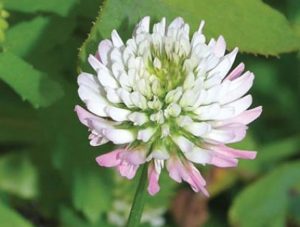
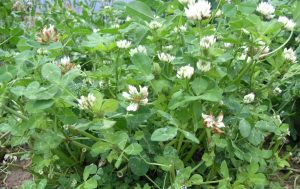
Common Name: Balansa Clover
Scientific Name ‘Cultivar’: Trifolium michelianum Savi
Primary Function: Food Crop – foliage for livestock
Additional Function: Fixes nitrogen
Trifolium pratense (Red Clover)
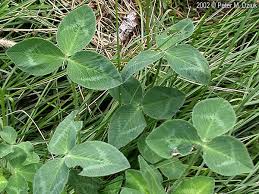
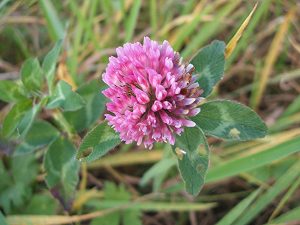
Common Name: Red Clover
Scientific Name ‘Cultivar’: Trifolium pratense
Primary Function: Cover Crop – increases soil fertility
Additional Function: Medicinal Plant
Fun Fact: Health care practitioners have used the red clover for a wide range of treatments including cardiovascular health, menopause, osteoporosis, cancer, and eczema. The pink petals are also edible.
Viola sororia (Violets)
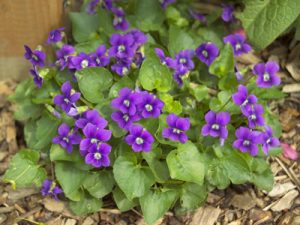
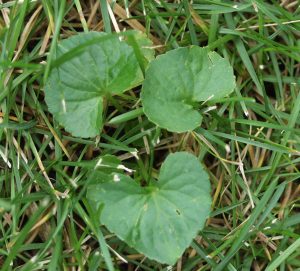
Common Name: Violets
Scientific Name ‘Cultivar’: Viola sororia
Primary Function: Ornamental – lawn and garden plant
Additional Function: Medicinal and Food Crop – edible flowers and leaves
Fun Fact: The violet’s flowers and leaves have historically been used medicinally to treat headaches, constipation, and symptoms of the common cold. The flowers are edible and frost hardy.
Email Doni at dnolan6@gmu.edu for a complete list of plants, detailed maps of the Innovation Food Forest and for any other questions.
